
I LOVE hiking. But something about hiking a VOLCANO just makes it that much more badass.
I knew I wanted to get some solid hiking in during my three-month stay in Mexico City, and after hiking not one, but TWO volcanoes, I can happily say ‘Mission Accomplished.’ I experienced these two volcano hikes in totally different ways: One via a guided group hike with a tour company, and the other with a friend, via public transport and kind of winging it. Spoiler alert: Both were awesome.
This post is about hiking Iztaccihuatl, often called The Sleeping Woman due to her shape and back story. This was hands-down one of the most challenging and best hikes I have ever done.
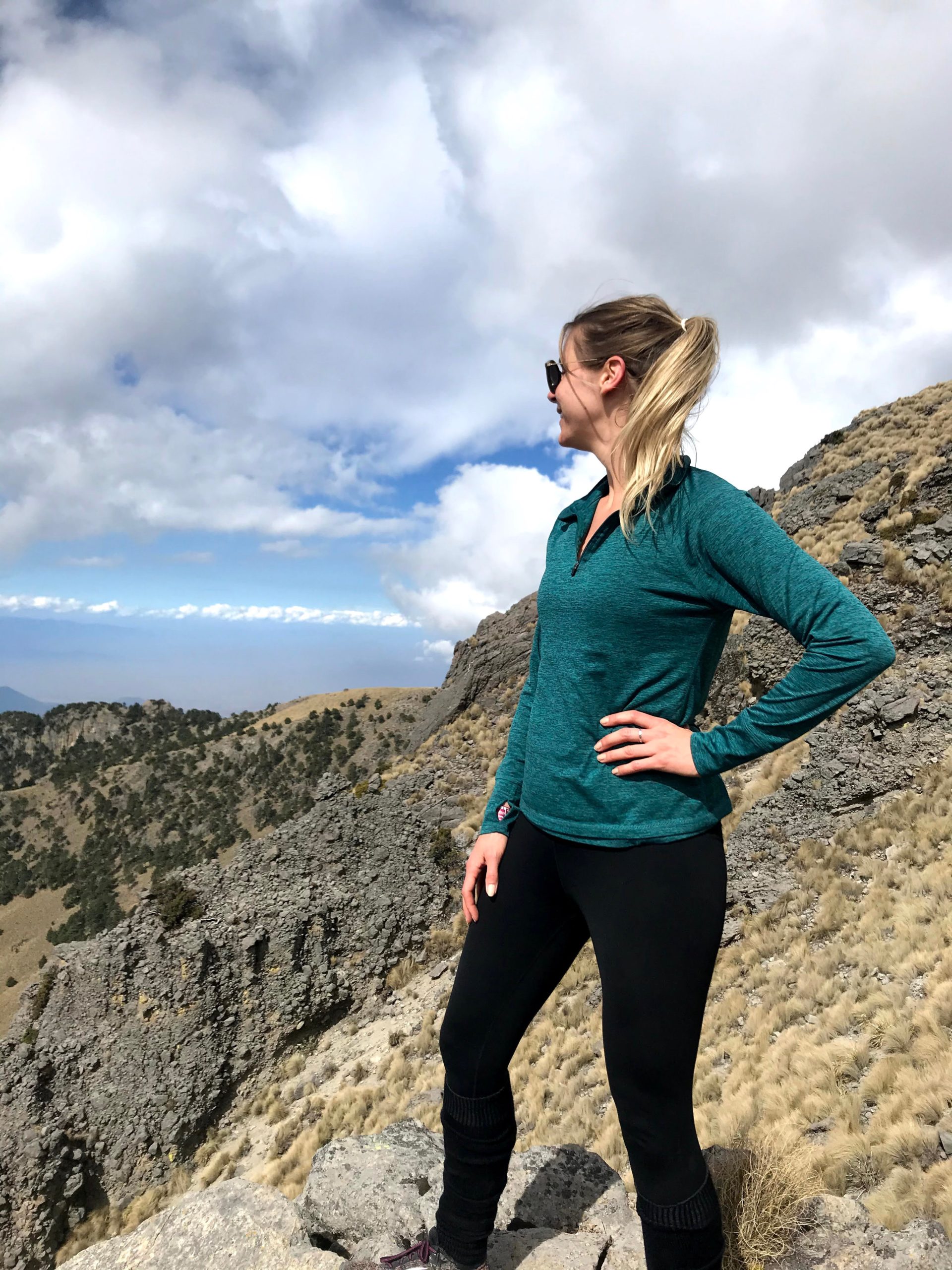
Check out some of my other Hiking posts when you’re done. Just keep scrolling!
Iztaccihautl (It’s-A-See-Whattle) is one of the two volcanoes in the Izta-Popo National Park, located about 2.5 hours Southwest of Mexico City. Popocatépetl is the other volcano and is the second highest peak in Mexico. Iztaccihautl comes in third highest, with an altitude of 5,230 m or 17,160 ft. These two share a pretty cool origin story. Rather than trying to paraphrase, here is the Wikipedia version:
In Aztec mythology, Iztaccíhuatl was a princess who fell in love with one of her father’s warriors, Popocatépetl. The emperor sent Popocatépetl to war in Oaxaca, promising him Iztaccíhuatl as his wife when he returned (which Iztaccíhuatl’s father presumed he would not). Iztaccíhuatl was falsely told that Popocatépetl had died in battle, and believing the news, she died of grief. When Popocatépetl returned to find his love dead, he took her body to a spot outside Tenochtitlan and kneeled by her grave. The gods covered them with snow and changed them into mountains. Iztaccíhuatl’s mountain is called “White Woman” (from Nahuatl iztāc “white” and cihuātl “woman”) because it resembles a woman lying on her back, and is often covered with snow — the peak is sometimes nicknamed La Mujer Dormida, “The Sleeping Woman”. Popocatépetl became an active volcano, raining fire on Earth in blind rage at the loss of his beloved.[4]
Being that Popo is still active, he is off-limits to hikers, although, as you can probably imagine, that doesn’t stop everybody. Izta, on the other hand, has not erupted since 1868, so she is safe to climb. This volcano has three summits, and no crater, making The Sleeping Woman a bit different from the cone-shaped, lava spewing volcano that usually comes to mind. Due to the altitude, both Izta and Popo are almost perpetually snow-capped, making an ascent to the top summit pretty intense, and also making the views from surrounding towns below absolutely stunning.
Things to note
- Dress in layers. More than you think. I went in January, and while the average temperature in Mexico City is somewhere between 42-71 Farenheight (5-22 C), at Izta-Popo the highs only average 54 degrees farenheight, with an average low of 20. (-7-12 Celsius). Yikes. I layered in all the layers I had including gloves for the occasion. I was very glad I did. Bring a coat. If you’re short on space, bring a down or down alternative packable coat like this or that from Uniqulo. Be sure to consider precipitation because cold and wet is hell on Earth. Also consider wearing two pairs of pants, leg warmers, or big slouchy warm socks. Worked for me!
2. Altitude is no joke. Do not be surprised when you find yourself unable to breathe, even when the incline looks less than challenging. (These two hikes, btw, are not in the less-than-challenging category.) I had been in Mexico City, with an altitude of 7,382 feet, for three months prior to my first volcano hike. I think of myself as moderately athletic and pretty fit. Still, climbing Iztaccihuatl was heart-pounding, lung-straining, head-dizzying work. I got my first taste of altitude sickness after descending Iztaccihuatl, and I did not like it one bit. The moral of the story: Do not do this hike on your first or second day in Mexico. Give yourself some time to acclimatize to the altitude and also take necessary precautions, like the ones found here.

THE TOUR
I booked a full-day volcano hiking tour with tour company Amigo Tours, which I booked through a website called Getyourguide.com. Being a solo traveler, I found this an easy way to ensure that
1. I was safe. I wouldn’t say I’m scared to go hiking by myself, but I would say that my life is important to me and so I’m cautious.
2. I didn’t have to worry about getting there. Or, getting lost on the way. It’s over two hours in the car, which would equal to trains and buses and a whole lot more time. Sometimes the hassle saved in navigating can be well worth the cost of paying a tour company.
3. I could learn some things along the way. I could do all the internet research in the world on my own, but it’s just not the same as hearing facts from someone knowledgeable about the place, while you’re in the place. For me, the information sinks in more easily. And it gives me more free time (NOT spent internet researching) to write blog posts, study Spanish, and sleep. Aaahhhh.
I know some people just hate taking tours, but I’m not one of them. Especially when I’m traveling solo.
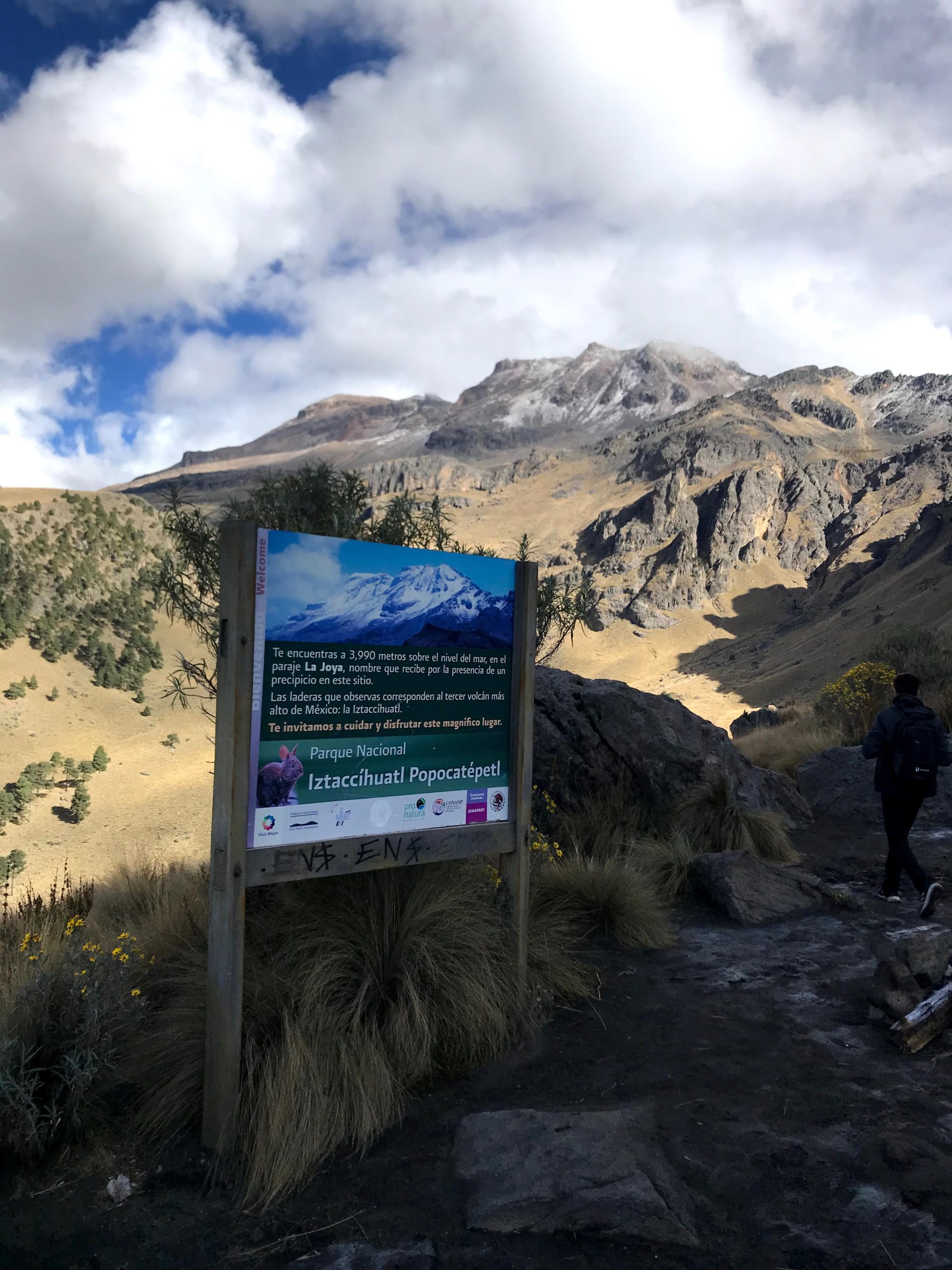
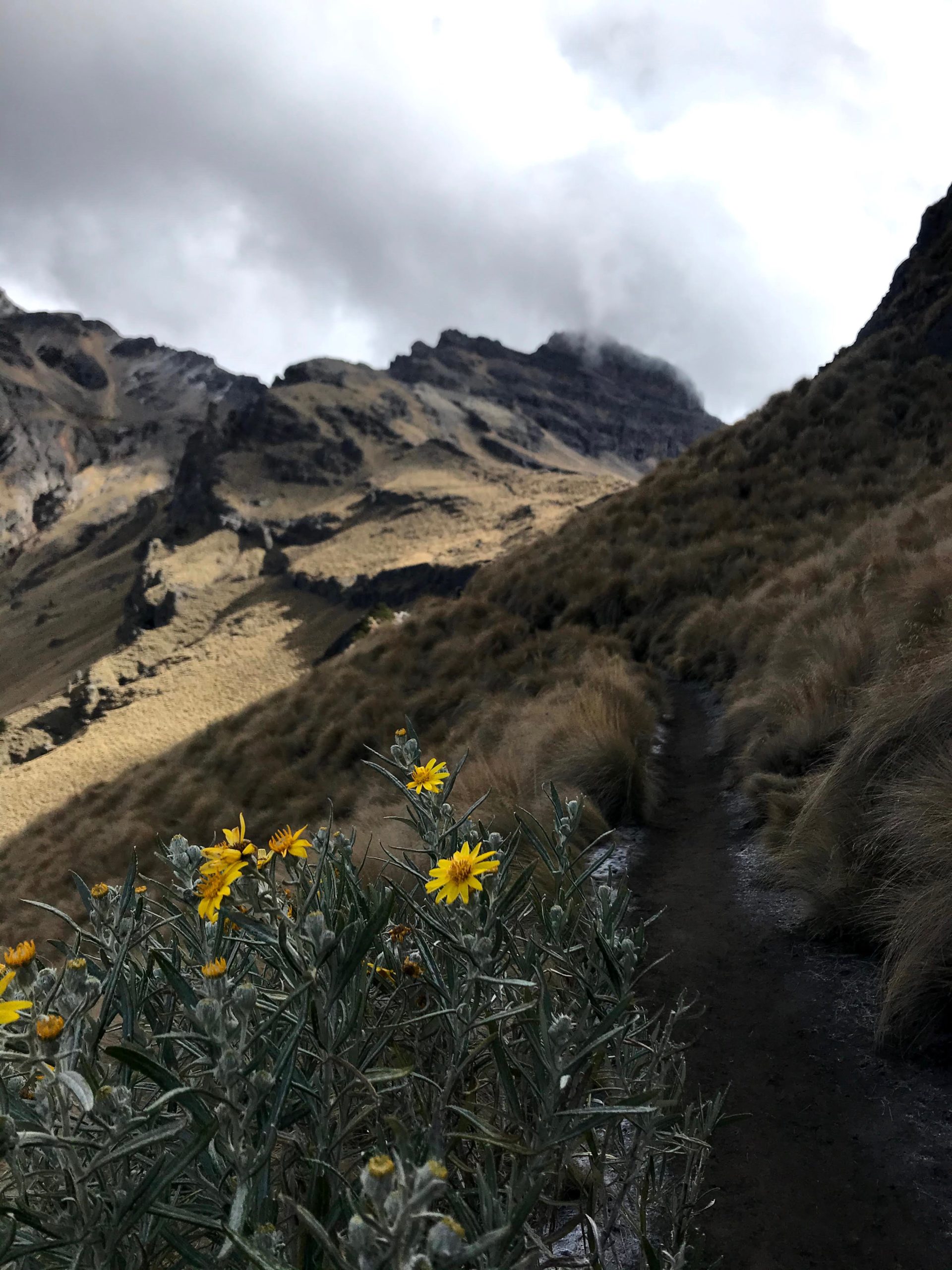
GETTING THERE
I made the 30 minute walk from my apartment to the designated meeting spot for a 6:20 pickup. Surprisingly, I had enough time to stop and buy a yogurt parfait from one of the vendors setting up for a day of feeding the masses. This breakfast looked decidedly more appealing than the gas station fare some of the others ended up purchasing along the way. I met some strangers in the wee hours of the pre-dawn morning and we awaited our chariot.
*Note: The best weather at Iztaccihuatl is in the early hours, so don’t roll out of bed late, even if you’re on your own timeline. Storms can sweep in quickly.
When I took a guided tour to Teotihuacan, the ancient pyramids near Mexico City, it was in a full-size tour bus. The kind requiring your guide to wear a microphone. This tour however, to hike the third highest peak in Mexico, was significantly smaller. A passenger van holding a max of 20 people made one more stop and then we were on our way. The drive was long and quiet, with many of the group members, myself included, taking morning siestas. At about one hour out, the drive becomes a series of winding hairpin turns that will keep you awake and holding onto your seat.
Paso de Cortes
Paso de Cortes is the road that runs between the two volcanoes, and is also where the visitor’s center is located. Here is where we got our first views of Iztaccihuatl and Popocatépetl. And it is seriously something. We enter the visitor center and use the restroom. (Bring your own toilet paper—bring it everywhere in Mexico.) Then back in the van for another 40 minute drive, more curvy than the last.
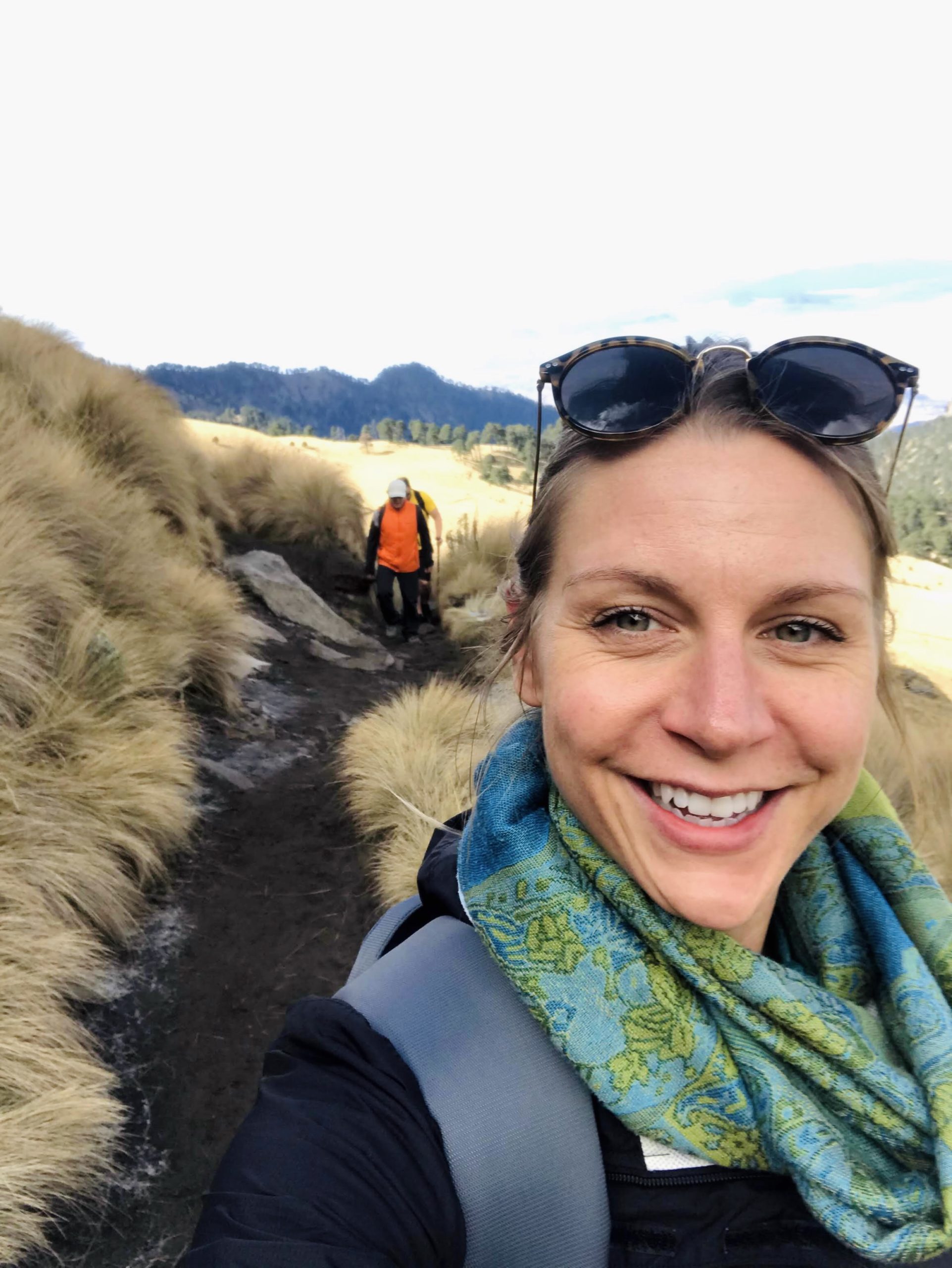
The Climb
There is no easing into it here. The grade is steep immediately, and the trailhead starts at 13,000 ft. During your three-hour drive to the starting point of this hike, you’ve already gained more than 5,500 feet of altitude in the car. In other words, your body is not quite prepared.
Being the over-achiever that I am (and also believing that hiking faster up an incline is less work for my body than slow, controlled motions), I was the leader of the pack for the entirety of the hike. This was nice because I got to walk and talk with the tour guide, practicing my español along the way. While I may have fooled the others into thinking I was fit AF, I really was feeling the effects. My heart beat incredibly fast. Breathing took every bit as much effort from my lungs as the climbing did from my legs.
The view from various points along the way is stunning. You get a sense for how immense this peak really is looking down at the ever-expanding stretch of the land below. And hearing stories of daring hikers sneaking to climb Popo, of the far more recent eruptions, drives home the fact that you are HIKING A FREAKING VOLCANO! Wow.

Peaks
Once we got to the top, it was darker, colder, but the view was amazing and so was the sense of accomplishment.
Until the guide asked if we were ready to continue.
The “top” was not the top at all. The clouds rolled in at a reckless pace. Soft and gray, a blanket, blocking views of the landscapes below and potential storms in the distance. But we trudged onward and upward. Excelsior.
The upper portion of the hike was harder. Not only was the altitude really kicking my ass by this point, but so, too was the terrain. A soft, gravelly dirt almost like sand shifted underfoot, making every single step a feat of muscle, balance, and stamina. Twice I almost fell. I was getting dizzy, a fog of mind that prevented precision of movement or thought. I marveled at my incapacity, talked myself through to get to the top.
Nature and the human body: Two of the greatest wonders of the world, clashing. A third wonder—will—Stepping in to make it happen.
And me, a mere observer, impressed by the wonder of it all.
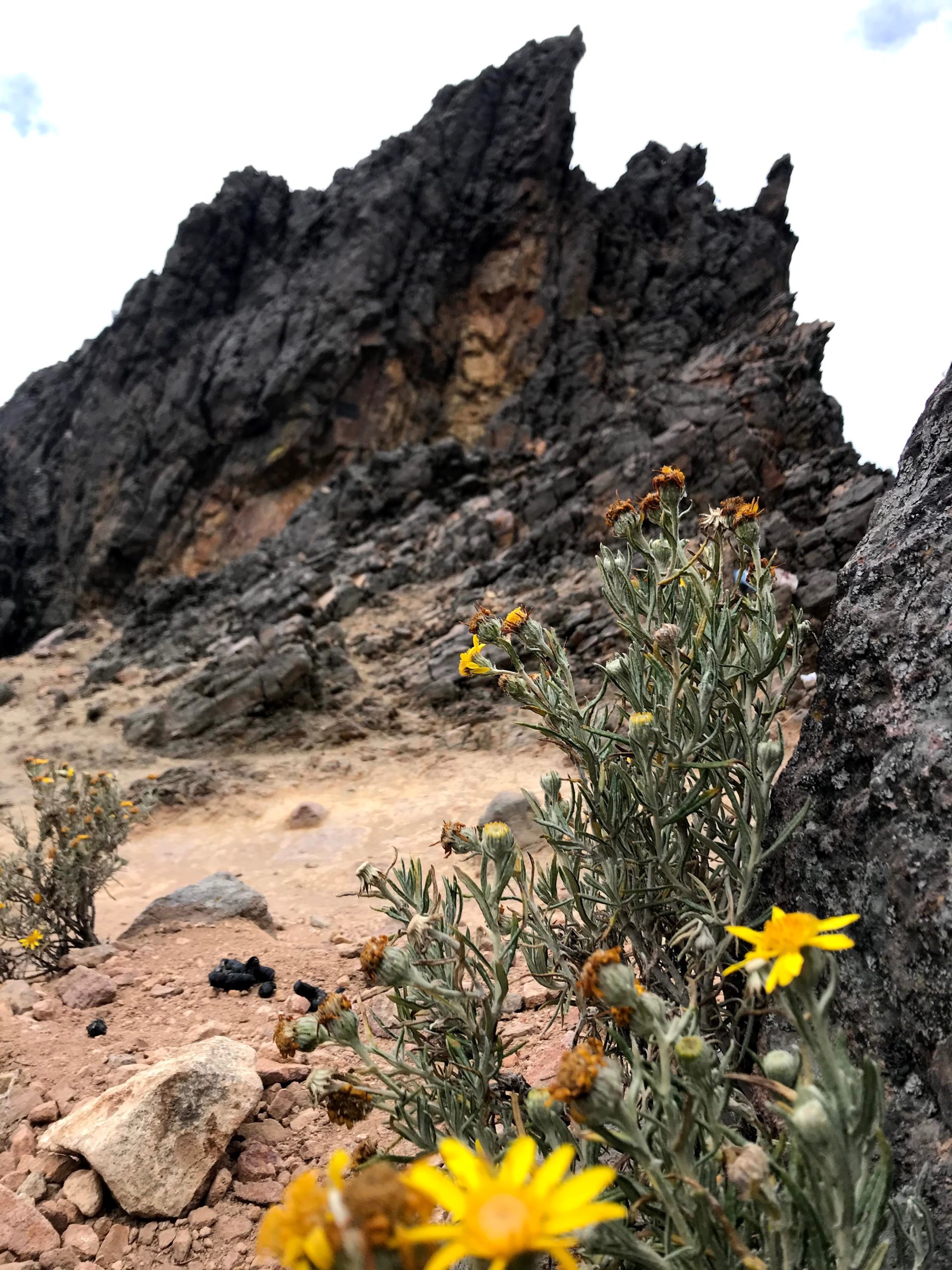

The landscape turned at this peak (still not the highest point, by the way) to a post-apocalyptic scene. Dark, gray clouds and craggy, jagged rock formations. Left behind were the rolling green and golden pastures of the land. At 15,000 ft, we were above it all. We took in the views, the height, the feat, and then we set our sights south.
*You know I’d love to go back and do this hike to the top. But for all the benefits of a guided group tour, one of the pitfalls was a set schedule. Le sigh. Maybe someday.
As on the way up, I was the first in group to reach the bottom, accompanied by a woman from Minnesota, who happened to be the oldest group member, a solo female traveler, and a serious #Goals inspirer. We talked travel while waiting for the rest of our group, and took a cute family photo when everyone arrived.

Post-Hike
Literally no activity in Mexico is complete without street food, and there is a small hut in the parking lot that serves up delicious tacos, quesadillas and sopas. At some point, while in Mexico, you must try huitlacoche, which is a fungus that grows on corn, and has a texture similar to mushroom. This is the taco that I enjoyed…until I didn’t.
It was an incredible day. But very soon into the ride back I began feeling sick. Car sick, I thought at first, which is unusual for me, but the nausea lasted for all of the hours back to the City and followed me into the next day. When I returned home, exhausted and dirt stained, I bathed and was in bed by 7pm. I slept for 15 hours and then took a multi-hour nap. By Sunday evening I was able to eat something and by Monday I felt better. I am convinced, based on my symptoms, that it had to have been altitude sickness that took me down. The ascent up Iztaccihuatl was rapid, and the descent was even quicker.
I thought back on my victorious march up and down the volcano, of how fit I must have looked to my peers in the group. I wondered if any of them had suffered the same fate, or if I was, in fact, the weakest link.

If you’re into hiking at all and find yourself in central Mexico, do yourself a favor and add this volcano hike to your itinerary. If you are an avid hiker, get busy planning a trip around this site. There is a multi-day guided trek through Iztaccihuatl AND the Nevado de Toluca that looks amazing. And speaking of the Nevado de Toluca, the other volcano I hiked in Mexico, I’ll be writing about that one soon, too. Stay tuned!
What has been your favorite hike ever? Any recommendations for great hikes in Mexico? Or other countries (including the U.S.)—I’m all ears!

Check out some of my other HIKING posts:
HIKING AND PARAGLIDING IN COCORNÁ
SCOTTSDALE & SEDONA: ARIZONA GIRLS’ WEEKEND GUIDE
ADVENTURE AWAITS! CORONA-APPROVED LOCAL TRAVEL
STAYING CLASSY IN SAN DIEGO
Read more about my time in Mexico City:
TAKEAWAYS, THREE WEEKS IN
WHY I STOPPED TAKING SPANISH CLASSES AND STARTED VOLUNTEERING
MAZUNTE IS MAGIC
BABY SEA TURTLE RELEASE AT BACOCHO BEACH




Pingback: Challenges, Missed Deadlines, & National Novel Writing Month - awheelinthesky.com